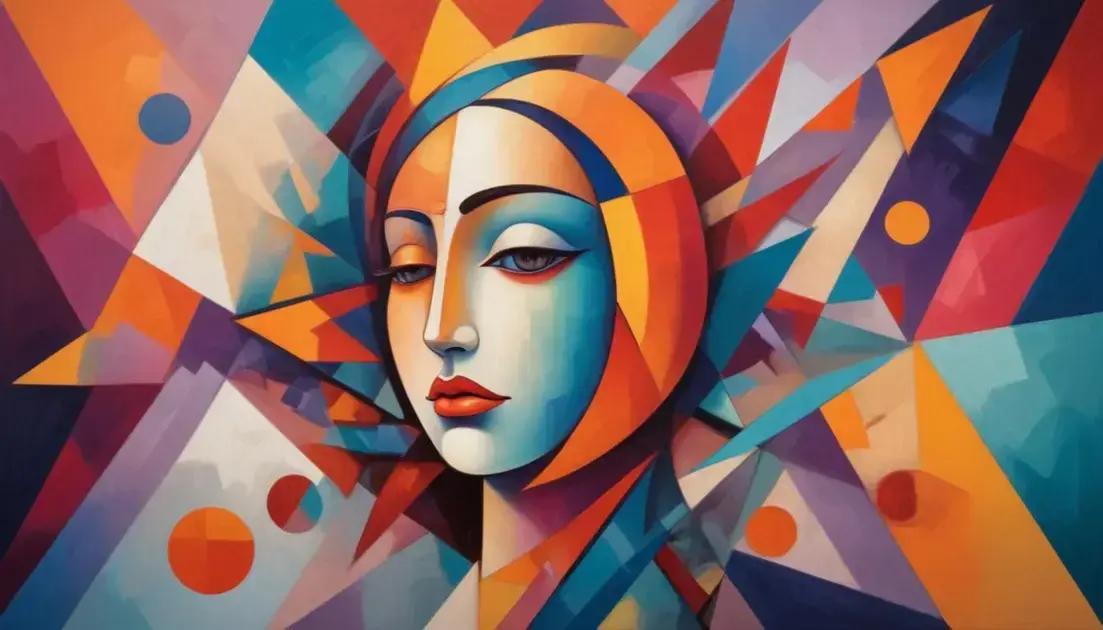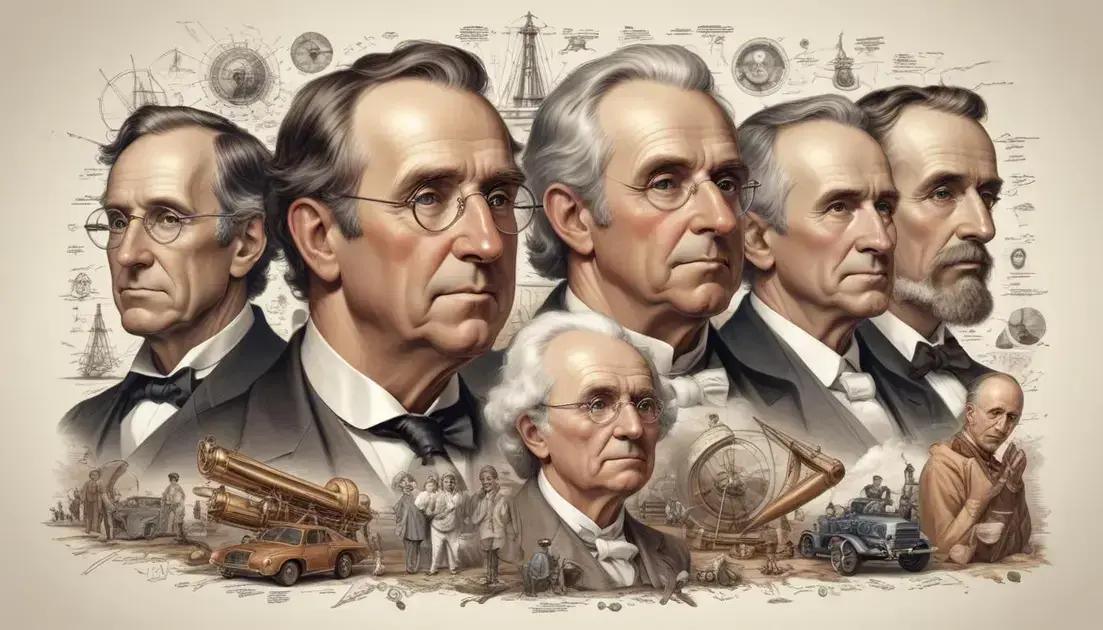
Abstract Art: Liberating Form
Abstract Art profoundly influences modern creativity by encouraging artists to explore emotions and ideas through innovation. This art form breaks away from traditional techniques, promoting experimentation with colors and shapes. Its impact extends beyond painting, inspiring various fields such as design and fashion. The spirit of Abstract Art fosters a culture of personal interpretation and creative freedom, making it an essential element in shaping the future of artistic expression.
Welcome to the world of Abstract Art, where emotions break free and shapes become experiences. Have you ever wondered how artists like Kandinsky and Mondrian changed everything for creators of today?
The Essence of Abstract Art
Abstract Art goes beyond traditional boundaries. It’s about expressing feelings and ideas through colors and shapes. The artists, like Kandinsky and Mondrian, used creativity to challenge what we think art is.
What Makes Abstract Art Special?
This form of art strips away the usual features of reality. Instead of clear forms, you see bold colors and unique shapes. This provokes thought and stirs emotions in a way that realistic art might not.
Exploring Kandinsky’s Impact
Wassily Kandinsky believed that art should evoke emotions. He used colors to represent feelings just like music does. His work encourages viewers to find their own interpretations instead of following strict rules.
Mondrian and Geometric Spirituality
Piet Mondrian took a different path. He focused on geometric shapes and primary colors. His art aimed to reach harmony and simplicity, reflecting a spiritual balance. This makes his pieces feel both organized and free at the same time.
Engaging with Abstract Art Today
Today, many artists draw inspiration from abstract art. It encourages creativity and exploration in various art forms. Visitors to galleries are often surprised by how this kind of art feels both new and familiar.
In museums, it’s common to see people standing in front of abstract pieces, lost in thought. This shows that abstract art successfully opens minds and invites personal connections.
Kandinsky’s Emotional Innovations
Kandinsky was a pioneer in using color to express deep emotions. He believed that colors had their own feelings. For example, blue could create a sense of calm, while yellow sparked joy. He wanted viewers to feel something when they looked at his art.
The Connection Between Color and Emotion
In his works, Kandinsky used vibrant colors to attract attention. Each hue was carefully chosen to evoke a specific response. This was different from traditional art, which focused on realistic scenes.
Abstract Forms and Emotional Depth
Kandinsky often used abstract shapes to represent feelings. These forms allow viewers to interpret the art in personal ways. A swirling line may suggest movement, while a sharp angle might create tension. This freedom adds depth to his pieces.
The Influence of Music on His Art
Music greatly influenced Kandinsky. He often described his paintings as musical compositions. This shows in the rhythm and balance found in his work. He wanted people to hear music when they viewed his art.
Legacy of Kandinsky’s Innovations
Kandinsky’s work opened doors for future artists. His ideas helped shape modern abstract art. Today, many artists experiment with color and form like he did. His emotional approach continues to inspire creativity.
Mondrian’s Geometric Spirituality
Piet Mondrian transformed art with his unique geometric style. He used simple shapes like squares and rectangles. His work is well-known for its clean lines and primary colors. This style reflects a sense of balance and harmony.
The Power of Simplicity
For Mondrian, less was more. He believed that stripping away details could reveal deeper meanings. By focusing on essential forms, he created art that feels both precise and spiritual.
Color and Spirituality
Mondrian used color thoughtfully. Each primary color held significance. Red, blue, and yellow represented different aspects of life. Their arrangement in his paintings aimed for unity and peace.
Influence of Nature and Music
Naturally, Mondrian drew inspiration from the world around him. He sought to capture the essence of nature through abstract forms. He also believed that art should resonate like music, creating a rhythm through visual elements.
Legacy of Mondrian’s Work
Many artists today admire and study Mondrian’s approach. His combination of geometry and spirituality has inspired countless creators. His work reminds us that art can express profound ideas in simple ways.
The Legacy of Abstract Art
The legacy of Abstract Art is immense and continues to influence artists worldwide. This movement changed how we view creativity and expression. Instead of focusing on realism, artists began to explore emotions and ideas through colors and forms.
Impact on Modern Art
Abstract Art opened new avenues for artistic expression. It challenged traditional methods and inspired movements like Expressionism and Surrealism. Today, many artists use abstract techniques to convey their messages.
Influence on Design and Culture
The principles of Abstract Art can also be seen in design and architecture. From fashion to interior design, shapes and colors from this genre inspire creativity everywhere. Its influence extends beyond galleries and into everyday life.
Educational Importance
Abstract Art plays a crucial role in art education. It encourages students to think creatively and experiment with various materials. Learning about abstraction helps develop a deeper understanding of artistic concepts.
Continuing the Conversation
Debates about the meaning and value of Abstract Art persist. Many visitors to galleries find themselves questioning the nature of art itself. This ongoing conversation keeps the spirit of Abstract Art alive and relevant today.
How Abstract Art Influences Modern Creativity
Abstract Art has a strong impact on modern creativity. It inspires artists to break away from traditional styles. This genre encourages freedom of expression and innovation in many creative fields.
Encouraging Experimentation
Many artists try new techniques inspired by abstract forms. Using unexpected colors or shapes allows for unique creations. This experimentation helps push the boundaries of what art can be.
Influence on Various Mediums
Abstract Art isn’t just for painting. It influences design, music, and even fashion. Graphic designers often borrow elements from abstract styles to create eye-catching visuals.
Fostering Personal Interpretation
With Abstract Art, viewers are invited to find their own meaning. This personal connection encourages artists to explore different perspectives. Each piece tells a unique story that resonates with different people.
Building a Culture of Innovation
The principles of Abstract Art promote a culture of innovation. Many schools teach these concepts to encourage creative thinking. By embracing abstraction, students learn to express their ideas more freely.
Conclusion
In conclusion, the influence of Abstract Art on modern creativity is profound and far-reaching. It encourages artists to break free from traditional styles and express their emotions and ideas in new ways. By embracing experimentation, artists and designers can create unique and vibrant works that resonate with diverse audiences.
Moreover, Abstract Art fosters a culture of innovation, inviting personal interpretations and making creativity accessible to everyone. Whether in painting, design, or other mediums, the spirit of abstraction continues to inspire and challenge us. Ultimately, this freedom of expression shapes the future of art and creativity in exciting ways.


